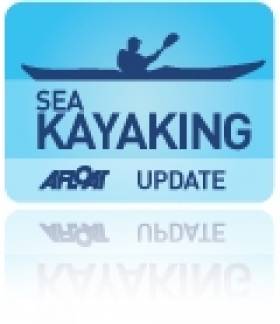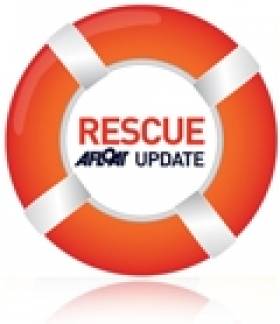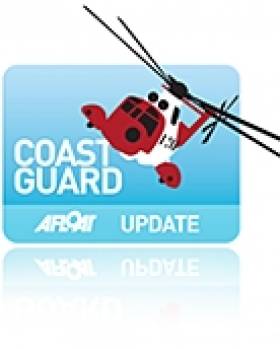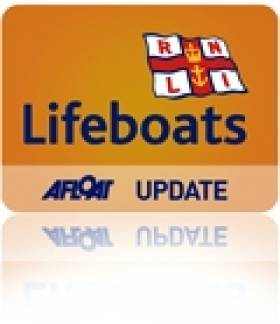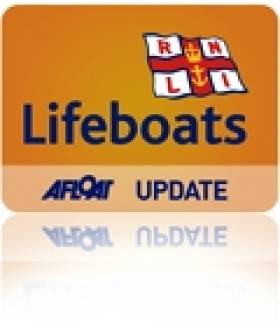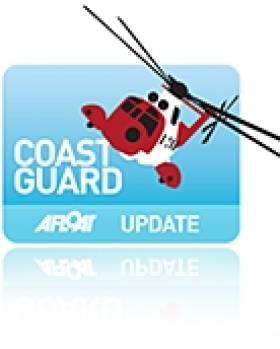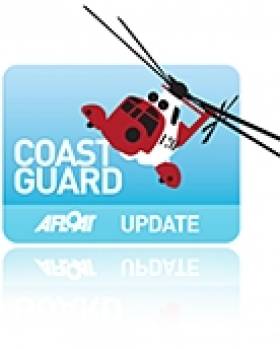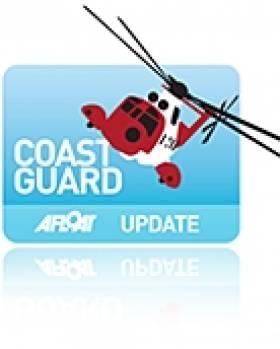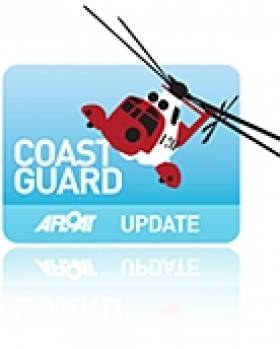Displaying items by tag: Coastguard
Irish Sea Kayaker Feared Dead
A kayaker is feared dead after disappearing in treacherous conditions off the coast of Anglesey on the far side of the Irish Sea. The 53-year-old mother-of-two was separated from four other canoeists between Rhosneigr and Rhoscolyn as they were battered by waves and heavy winds at around 2.30pm on Sunday.
The rest of the party were washed ashore but the woman from Shrewsbury has not been seen since then.
Her disappearance saw a major land and sea search launched with the police and RAF Valley helicopters, three lifeboats and dozens of coastguard officers scouring the area.
They were yesterday joined by a fixed wing aircraft and SARDA search and rescue dogs who were searching the coastline in case she had been washed up injured onto the shore.
The chance of her being found alive was fading with every passing hour but the coastguard said they had not given up hope. More HERE from the North Wales Daily Post.
Three Die in Cruiser Fire off West Cork
Three men are dead and a fourth has been injured after a boat went on fire and sank off the West Cork coast this evening. It happened in waters south of Roundcarrig Lighthouse off Adrigole Harbour, Bantry Bay. It is understood a serious fire broke out on the 25-foot cruiser. The RNLI lifeboat went to the cruiser's rescue at 5.45pm. There is no information currently about the type of cruiser involved.
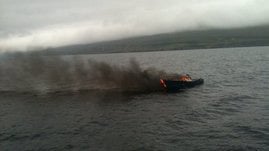
Photo: courtesy of Castletownbere lifeboat
A Coast Guard helicopter spotted the men in the water. The boat was on fire and sinking as they arrived.
The bodies of the three victims have been removed to hospital. It is understood all four men, who were in their 60s, were living in the Glengarriff area.
One of the victims is Irish and the other two men are from other European countries. A fourth man, who survived the incident, has also been taken to hospital.
The boat sank a short while later off Roancarrig, about seven miles from the fishing port. Conditions were calm at the time with some light fog in the bay, the spokeswoman said. Officials from the Marine Casualty Investigation Board will carry out an inquiry into the incident.
It is understood investigations will centre on whether an explosion in the engine caused the fire.
Press Release from RNLI:
Lifeboat crew with Castletownbere RNLI responded to a callout out this evening (Monday 16 August 2010) to a 25-foot cruiser on fire seven miles off the coast of Castletownbere, off Adrigole Harbour in Bantry Bay. The Shannon based Coast Guard helicopter was on scene and recovered four casualties from the water. Three were pronounced dead and one was taken to Cork University hospital for treatment.The Castletownbere all weather lifeboat was requested to launch at 17.41 hrs in calm conditions. On arrival at the scene the lifeboat volunteers witnessed the vessel on fire and the CG helicopter was recovering the casualties from the water. The Shannon based helicopter had been out on a callout and was in the area. The lifeboat was designated on scene commander and stayed on scene until the burning cruiser sank.
Shannon Cruiser Crash
A man at the upper controls of a cruiser on the inland waterways jumped to safety just before his vessel hit a bridge in Co Tipperary on Friday last.
The man was believed to be attempting to moor the vessel close to the bridge at Ballina on the Shannon when he lost control. The boat hit one of the bridge arches causing extensive damage to the boat’s upper-level console. It is believed that only for the water level at the time and his quick actions he could have been seriously injured.
There were six people on board the vessel all of whom were in the lower deck and uninjured.
The incident was witnessed by a member of the Killaloe unit of the Irish Coast Guard, who raised the alarm. Rescuers went to the scene and discovered that the cruiser had been extensively damaged.
Welsh Coastguards Carry Out Two Irish Sea Evacuations
A three year old boy and a commercial seaman have both been evacuated from two separate vessels due to medical problems yesterday afternoon.
Milford Haven Coastguard was contacted at just before 4.00 pm to report that a child had been taken ill onboard the roll-on-roll-off ferry Stena Europe. The vessel was 13 nautical miles west of Strumble Head. The boy was being attended to by a doctor and two nurses onboard the ferry who, after discussion with doctors at Aberdeen Royal Infirmary, advised that the boy needed to be taken off the vessel. Rescue helicopter 122 from RAF Valley was scrambled and the boy was airlifted to Withybush Hospital.
The little boy and his family were on their way home to Ireland when the child was taken ill, says Graham Warlow, Milford Haven Coastguard Watch Manager. We wish him a speedy recovery.
At the same time that the Stena Europe was in contact with Milford Haven Coastguard, the merchant vessel Marida Melissa contacted Holyhead Coastguard to report that they had their own medical emergency onboard. One of their seafarers, an Indian national, had become ill, and after discussions with doctors it was decided that the best course of action would be to evacuate him to hospital. However, the rescue helicopter was already needed for the ill child on the ferry and so Moelfre RNLI lifeboat was requested to launch with paramedics onboard.
We dont normally use lifeboats for medical evacuations but in this case, the child had to take priority, says Barry Priddis, Holyhead Coastguard Watch Manager. When the lifeboat crew arrived at the vessel, which was anchored off Moelfre, they assessed the scene and reported back to us that they were confident that they could evacuate the ill man off of the ship safely. The man was carefully lifted on to the lifeboat then taken back into Moelfre, where he was lifted into an awaiting ambulance, then on to hospital.
Launch of Helensburgh Lifeboat following capsized dinghy
At 6.27pm on Wednesday 11 August 2010 Clyde Coastguard instructed the launch of Helensburgh RNLI Lifeboat after they were advised that a dinghy had capsized off the Helensburgh sea front and that there were two children in the water; the adult with them appeared to be having difficulty righting the dinghy.
While the inshore lifeboat (ILB) was proceeding to the scene, Clyde Coastguard advised that a passing RIB had taken the children ashore however the adult was still trying to right the dinghy. At 6.37pm the ILB was on scene where the crew helped to right the boat; this was complicated by the fact that the mast was stuck in the mud.Once 'unstuck', the dinghy was towed back to Helensburgh Pier by the ILB. The ILB then returned to base.
Related Safety posts
RNLI Lifeboats in Ireland
Safety News
Rescue News from RNLI Lifeboats in Ireland
Coast Guard News from Ireland
Water Safety News from Ireland
Marine Casualty Investigation Board News
Marine Warnings
Cold Swimmer Rescued in Portrush Harbour
After swimming across the harbour to the moored boat the teenager called for help. Belfast Coastguard co-ordinated the rescue and sent the Portrush ILB Lifeboat and the Coleraine Coastguard Rescue team to the scene.
The Portrush lifeboat took the teenager from the boat to the pontoon where he received first aid from the Coastguard Rescue team before being transferred to hospital by ambulance.
Belfast Coastguard Watch Manager Alan Pritchard said:
"It may be summer but the sea is chilly and the cold can seriously affect swimmers.
"If you are going to take a dip please know you're limits and remember cold water shock can be dangerous, even if you're young and fit and think you're able."
Related Safety posts
RNLI Lifeboats in Ireland
Safety News
Rescue News from RNLI Lifeboats in Ireland
Coast Guard News from Ireland
Water Safety News from Ireland
Marine Casualty Investigation Board News
Marine Warnings
Howth Coastguard Work Features in 'The Irish Times'
Irish Times reporter Laurence Mackin spent a day with the Howth Coast Guard, and discovers their vital, voluntary work can be distressing as well as rewarding. His feature piece is well worth a read and is published HERE.
Heavy Rains Cut off Walkers
The 55 year old male, and 53 year old female from Falkirk were situated about 400 yards from the car park, but due to the very heavy condition of the river were unable to cross back across the bridge.
The South Down Coastguard Rescue Team were immediately turned out and the Coastguard in Dublin were contacted requesting the use of the Irish Coastguard helicopter, R116.
The man was winched with a member of the Coastguard Team, and taken to the helicopter landing site at Donard car park. The female was walked down to the Bloody Bridge car park along with members from the South Down Team.
Ian Murdock, Belfast Coastguard Watch Manager said
"We are urging visitors to have an eye on the weather forecast and the terrain into which they are entering, if they are intending to go out walking. Tourists are very welcome and the area is of outstanding natural beauty and is the most picturesque mountain district in Ireland. The twelve peaks include Slieve Donard, which at 850m is Northern Ireland's highest mountain. Some areas can be quite rugged and we are advising visitors to wear the correct footwear and ensure they have some form of communication device on them in case of unforeseen difficulty."
New SAR Contract Will Have Wide Range of Tasks
The new SAR contract signed by Minister Dempsey this morning will se CHCI provide five Helicopters that are four Prime Helicopters and a Back Up Helicopter based initially at Shannon Airport. The first S92A will be commissioned at Shannon in the second half of 2012.
The Helicopters are maintained at a state of readiness of not more than 15 minutes from 0830 to 2200 local time, and not more than 45 minutes from 2200 to 0830 local time for each and every day of every year.
Possible Taskings include:
Undertaking SAR operations by day and night, including landing at remote inland areas and hospital landing sites for the purpose of lifting and delivering casualties.
Providing Paramedic-trained and accredited rear crew to assist and evacuate casualties and potential casualties from the sites of appropriate major emergencies on land, including flooding and providing an onboard emergency medical service.
Delivering trained Fire Brigade personnel and trained fire fighting teams with their equipment to ships at sea to direct the fighting of fires. The standard team consists of six personnel and six bags (a total of 900 kg) and must be carried in a single lift.
Delivering trained Health Service Executive (HSE) Marine Ambulance Response Teams (MART) or a similarly equipped and trained medical response team to ships at sea while equipped with Standard Role Equipment and relevant Carry-On Equipment.
Delivering a contractor-owned and maintained pump to vessels that are taking in water faster than their own pumps can handle.
Delivering a normal mountain or cliff rescue team to remote areas throughout Ireland and working with them in the search and rescue of stranded and/or injured people.
Recovering casualties from and operating with RNLI and other rescue boat operators.
Providing an emergency service for the communities on the islands off the west coast. As well as evacuating sick and injured people where life is at risk. The Helicopters may also be tasked to provide assistance in the event of major emergencies such as a fire, flood or deep snow.
Visually assessing, videoing, photographing and sampling marine pollution to assist the containment and dispersion process and to contribute evidence for prosecution and attending court if required.
Carrying loads within the Helicopter's capability, such as equipment to counter marine pollution and flooding.
Carrying ships' pilots and IRCG coordinated search, response, emergency or investigation personnel to and from vessels, installations, incident sites and islands as required.
Assisting the Principal Response Agencies (Garda, HSE, and local authorities), Defence Forces and other Government Departments as required in emergency situations.
Delivering Garda, Navy or similar Water Unit Minimum Dive Teams and their equipment in a single lift to a land destination near the scene of water rescues.
Provide a distress monitoring, and when necessary a communication and coordination service on VHF marine frequencies when airborne.
Crew Experience:
Captains
Total helicopter hours 2500 hours
Hours in command of multi-engined helicopters 1000 hours
Hours on type 250 hours*
Hour in command on type 100 hours*
Co-Pilots
Total helicopter hours 750 hours
Hours on multi-engined helicopters 350 hours
Hours on type 50 hours
Winch Operators
At least one year's experience as a Winch Operator on a dedicated military or civilian SAR unit and at least the EMT qualification accredited by PHECC.
Winchpersons
At least three months experience as a Winchperson on a dedicated military or civilian SAR unit and at least the Paramedic qualification accredited by PHECC.
The S92A:
The S92A will:
• Hover in strong wind up to 35 knots crosswind and tailwind.
• Land, shut down and start on ground sloping up to 10 degrees nose up or down, 13 degrees laterally.
Aircraft Equipment:
• Active Vibration Control to provide better patient care and reduce crew fatigue.
• Composite Blades providing optimised cruise and hover performance at reduced fuel burn rates.
• Modern Cockpit Display System (CDS) affording pilots with greater amounts of available information, allowing for greater safety and situational awareness.
• A 4 Axis Automatic Flight Control System (AFCS) with Flight Director and Auto Hover capability to assist aircrew by providing automated search patterns and pinpoint transitions to and from the hover targets of interest regardless of day of day of weather conditions.
The S92A has one of the largest cabins of any helicopter in its class. At twenty feet long (6.10m) 6' 6" inches feet wide (2.01m) and 6' high (1.83m) the cabin is high enough for the crew to stand, move, manoeuvre patients without injury and deliver patient care effectively.
The aircraft standard range is in the region of 270 nautical miles that can be extended to over 300 nautical miles if required that allows for 30 minutes on scene and can lift over 20 survivors at maximum range. At 60 nautical miles 33 survivors can be recovered.
Maximum speed is in excess of 150 knots.
The Rotor Ice Protection System allows flight in icing conditions up to a maximum of 10,000 ft. The system also includes engine anti-icing through electrical and bleed air heating.
The contract, will provide SAR services from bases at Waterford, Dublin, Shannon and Sligo from 2012 onwards. CHC already provides SAR services from these bases but the new contract will see the existing fleet of S-61N aircraft replaced with newer Sikorsky S-92A helicopters that are custom fitted for SAR work.
Irish Coast Guard Director Chris Reynolds said, "The Irish Coast Guard provides a diverse range of maritime and land-based SAR activities, ranging from national emergency situations such as the recent flooding seen in Ireland last winter to medevac from our Islands, mountains, fishing vessels and incidents involving leisure activity."
"It is essential we have the right stepped increase in capabilities going forward for the next decade. We are very confident in selecting CHC Helicopter that our decision will continue to deliver excellence, providing the most efficient and effective SAR service for Ireland."
The Irish contract cements CHC Helicopter's position as a world leader in provision of civilian SAR services. In addition to the service already provided in Ireland, CHC currently provides SAR coverage in Australia and the UK, and through its membership in the Soteria consortium, has been identified as the preferred bidder on the UK SAR-H program, a 25-year contract to provide helicopter-based SAR services from 12 bases throughout the UK.
"CHC is internationally recognised as a provider of effective SAR solutions to customers worldwide. In today's very challenging environment, we offer the most efficient, reliable and effective services using industry leading technology," said Tilmann Gabriel, chairman of CHC Ireland and president of CHC Helicopter's European Operations.
Mark Kelly, Managing Director of CHC Ireland, added that Irish citizens could now expect to see many positive changes arise.
"Over the next decade this contract will offer a number of service improvements including the ability to deliver a paramedic to any SAR incident within an hour anywhere on our coastline, ensuring much faster treatment of casualties," he said.
CHC is the world's largest operator of the Sikorsky S-92 helicopter that has a long and distinguished pedigree in SAR operations. There are currently more than 100 S-92 helicopters in operation around the world with a fleet total approaching 250,000 flight-hours.
The state-of-the-art twin-engine aircraft will be specially equipped for SAR operations and capable of flying faster and farther than aircraft currently in use. As well as longer range and improved cruising speeds, the S-92s will be equipped with enhanced rescue mission technology including infra-red and low light cameras, a Nightsun searchlight, a satellite communications system featuring a Flight Following tracking facility, and high speed dual hoists.



























